How AI Analyzes Drone Pest Data
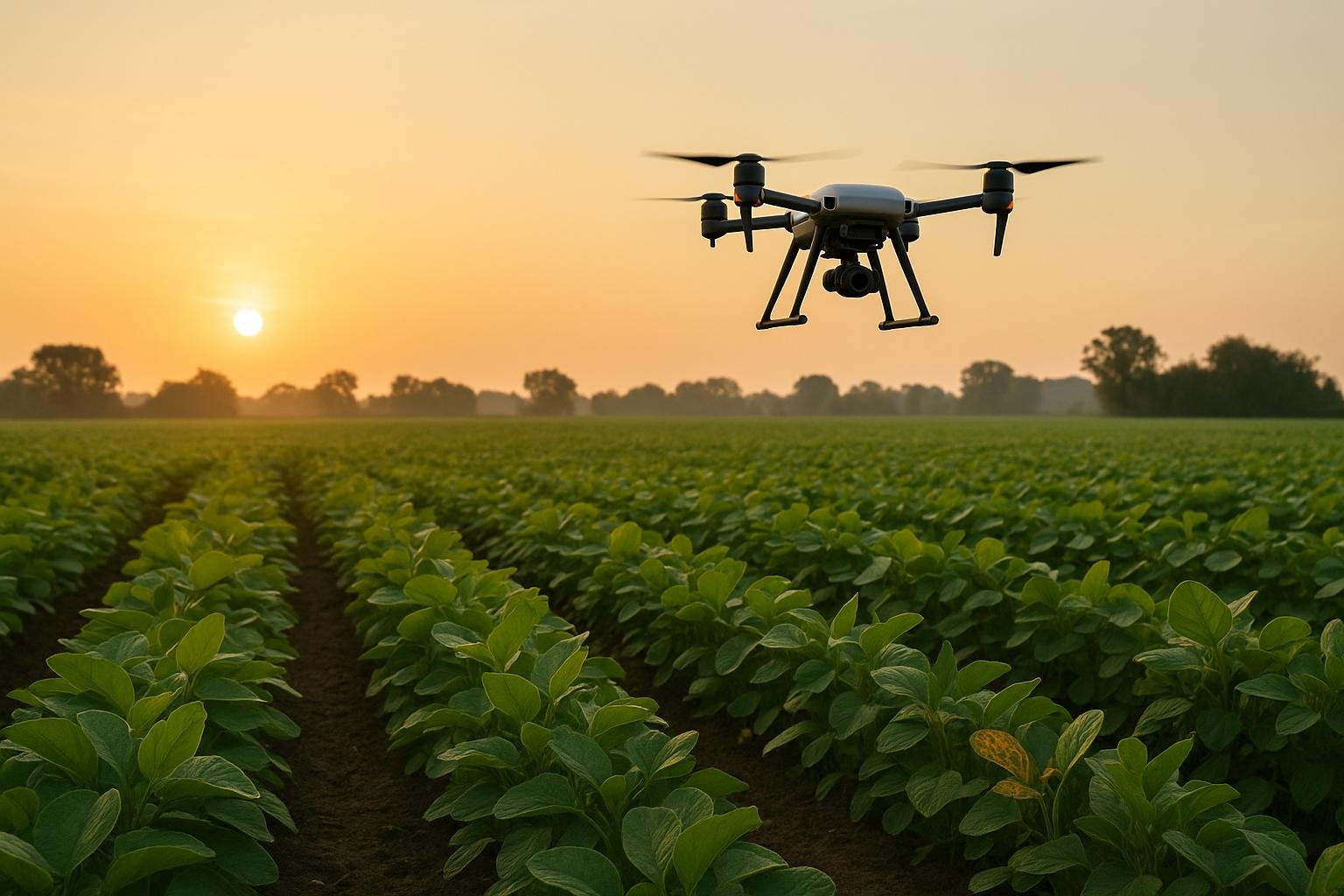
AI-powered drones are changing how we manage pests and diseases in agriculture. By combining drones with advanced machine learning, farmers can detect issues early, often before they’re visible. Here’s how it works:
- Drones equipped with sensors and cameras scan large areas quickly, collecting high-resolution images and data.
- AI algorithms analyze this data, identifying pests, diseases, and stressed plants in minutes, saving weeks of manual work.
- Precision mapping pinpoints problem zones, enabling targeted treatments that reduce chemical use and save costs.
- Continuous learning improves AI accuracy over time, refining its ability to detect issues.
While setting up these systems requires investment and expertise, the benefits - like faster detection, reduced pesticide use, and improved crop health - make them a game-changer for farms of all sizes.
【Remote Sensing】Crop Disease Detection Using UAV and Deep Learning Techniques

How Drone Data is Collected and Prepared for AI Analysis
AI-powered pest detection relies on the quality of the data captured during drone flights. Achieving accurate results starts with careful planning, precise data collection, and thorough preparation before any analysis begins.
Planning and Setting Up Drone Flights
Strategic planning is the first step. Using GPS coordinates, a digital map of the target area is created to ensure full coverage without missing sections or duplicating efforts.
Flight altitude plays a key role in balancing image detail and area coverage. Lower altitudes provide sharper, more detailed images, which are ideal for spotting small pest infestations or early signs of disease. Higher altitudes, while covering more ground, may miss these subtle indicators.
Weather conditions are another critical factor. High winds can destabilize the drone and blur images, while clear skies, calm winds, and moderate temperatures are ideal. Morning flights often work best, offering good lighting and avoiding heat-related distortions that can occur later in the day.
Battery life also needs to be factored in. For larger areas, planning for battery replacements or using drones with extended flight capabilities ensures uninterrupted data collection.
Flight paths are programmed in systematic patterns, like grids or parallel lines, with enough overlap between images. This overlap allows AI systems to analyze the same area from multiple angles, improving detection accuracy. Once everything is set, drones equipped with advanced sensors begin collecting detailed data.
Capturing Data with Drone Sensors
With flight plans in place, drones use various sensors to gather comprehensive information about crop health.
- RGB cameras capture standard color images, revealing visible signs of damage, discoloration, and pest activity.
- Multispectral sensors, including near-infrared (NIR), detect plant stress that isn’t visible to the naked eye. These sensors can identify early nutrient deficiencies, which might make plants more susceptible to pests.
- Thermal cameras measure temperature variations across the field. They can pinpoint localized heat anomalies, which often signal pest infestations or disease.
Consistency in sensor settings - like exposure, white balance, and focus - is essential for uniform image quality. Ground control points (GCPs) are also used to calibrate and align the images during processing, ensuring high precision.
Preparing Raw Data for Analysis
Once the data is collected, it needs to be processed before AI can analyze it.
The first step is image stitching, where individual photos are combined into a seamless map, known as an orthomosaic. This process corrects distortions caused by camera angles and movement, ensuring a cohesive view.
Next is geometric correction, which adjusts for lens distortion and perspective issues. This ensures consistent scaling and accurate measurements, which are vital for identifying pest and disease patterns.
Radiometric calibration comes next, standardizing light and color values across all images. This step eliminates lighting inconsistencies that could skew the analysis.
The data is then formatted into standardized file types that AI systems can process, with logical structures and consistent naming conventions for easy organization.
Quality control is another crucial step. Blurred, overexposed, or corrupted images are removed through a mix of automated tools and manual review, ensuring only the best data is used.
Finally, data annotation is performed. Experts label examples of pest damage, disease symptoms, and healthy crops to train the AI models effectively.
Processing raw data can take time, especially for large or complex areas. However, this preparation is essential - AI models are only as good as the data they’re trained on. Once refined, the dataset is ready to help AI systems detect and analyze pest activity with precision.
AI Methods for Analyzing Pest and Disease Data
Once data is prepared, AI algorithms step in to identify pest infestations, disease outbreaks, and plant stress. These tools turn raw images into actionable insights, helping farmers and gardeners safeguard their crops.
Machine Learning and Deep Learning for Pest Detection
Machine learning is the foundation of modern pest detection systems. These algorithms are trained on thousands of labeled examples, using techniques like support vector machines (SVMs) and random forests to classify damage based on features such as color changes, texture shifts, and shape distortions.
Deep learning takes this a step further with convolutional neural networks (CNNs). These models automatically identify patterns, like distinguishing aphid damage from fungal infections by analyzing leaf shape and color.
Transfer learning speeds up development by using pre-trained models from large image datasets and adapting them to specific agricultural needs. This method reduces the need for extensive pest-specific data while improving detection accuracy.
The training phase involves feeding the system thousands of images, showing both healthy plants and those affected by pests or diseases. Experts annotate these images with details about the type and severity of the problem, helping the AI recognize patterns. Techniques like data augmentation (e.g., rotating or brightening images) make the models more robust.
Once trained, these detection models integrate with mapping systems to pinpoint and quantify problem areas.
Automatic Detection and Mapping
AI systems process drone imagery in multiple steps to create detailed maps of pest and disease activity. Detection algorithms identify signs of damage or stress, while semantic segmentation outlines the exact boundaries of affected areas, giving a clear visual of the problem's scope.
Each detection is assigned a confidence score, reflecting the system's certainty. High scores indicate strong confidence in identifying a pest issue, while lower scores may suggest early-stage problems that need human review.
By combining detection results with GPS data, AI generates precise field maps showing the location and severity of issues. Temporal analysis - comparing current images with past data - tracks how infestations evolve over time. Heat maps further highlight areas with the most intense problems, making it easy to spot zones needing urgent attention.
This detailed data lays the groundwork for actionable solutions.
Creating Practical Recommendations
AI doesn’t just stop at identifying problems; it converts its findings into straightforward, actionable advice. For example, it prioritizes issues by urgency and provides precision maps that highlight exact treatment zones. This targeted approach helps reduce chemical use while ensuring effective pest control.
Recommendations are tailored to factors like infestation severity, crop type, and local conditions. They include advice on the best timing for treatment, appropriate dosages, and combining multiple control methods for maximum effectiveness. Economic analysis adds another layer of value, comparing treatment costs with potential crop losses to ensure interventions are both effective and affordable.
sbb-itb-4d6a8dd
🚀 Ready to Reinvent Your Garden?
Join thousands of homeowners who have transformed their gardens using our AI design tool. Upload one photo to explore endless possibilities.
Get your AI garden designs →Benefits and Challenges of AI-Driven Drone Surveillance
AI-powered drone surveillance is transforming pest monitoring by combining advanced data collection with intelligent analysis. While these systems bring new levels of efficiency and precision to agriculture, they also introduce challenges that professionals need to address.
Advantages of AI-Powered Drone Surveillance
Speed and Coverage
Drones equipped with AI can quickly survey expansive areas, making early pest detection faster and more efficient than traditional methods.
Precision and Consistency
AI systems excel at spotting even the smallest signs of pest damage or disease, ensuring consistent results that aren't influenced by human error.
Data-Driven Documentation
The high-resolution imagery captured by drones provides an ongoing, objective record of field conditions. This data supports better decision-making for pest management strategies.
Cost Efficiency
By identifying specific areas that require treatment, AI-guided drones help minimize chemical use and optimize resources, leading to potential cost savings.
Safety Benefits
Using drones reduces the need for workers to enter hazardous areas or handle pesticides directly, improving workplace safety.
Challenges and Limitations
Despite these advantages, there are hurdles to implementing AI-driven drone surveillance.
High Initial Investment
Setting up these systems involves significant costs for equipment and software, which can be prohibitive for smaller farms.
Technical Expertise Requirements
Operating AI-powered drones effectively demands knowledge in data processing and AI interpretation, often requiring additional training or hiring specialists.
Weather Dependencies
Adverse weather can delay drone flights, and extreme temperatures may impact their performance, limiting their reliability.
Data Accuracy Concerns
Factors like lighting, shadows, and plant growth stages can affect image quality. These inconsistencies might lead to errors, such as unnecessary treatments or missed pest problems.
Regulatory Compliance
Commercial drone use must comply with regulations such as FAA Part 107 certification. Operators also face restrictions on flight paths and privacy concerns, adding layers of complexity.
Comparison: AI-Driven vs. Manual Methods
| Factor | AI-Driven Drone Surveillance | Manual Inspection Methods |
|---|---|---|
| Coverage Speed | Surveys large areas rapidly | Limited by human pace |
| Initial Cost | High upfront investment | Lower initial costs |
| Operating Cost | Maintenance and software expenses | Accumulating labor costs |
| Detection Accuracy | Consistent and detailed | Varies with inspector experience |
| Weather Dependency | Sensitive to adverse weather | More adaptable |
| Data Documentation | Comprehensive digital records | Relies on manual note-taking |
| Skill Requirements | Requires technical expertise | Depends on agricultural knowledge |
| Treatment Precision | Targeted applications with GPS data | Broader, less specific treatments |
| Scalability | Easily scaled for larger operations | Limited by available labor |
| Real-time Response | Brief processing delays for analysis | Immediate, on-site decisions |
Conclusion
AI-powered drone technology is reshaping how we manage pests and diseases in agriculture. By merging high-resolution aerial imagery with advanced machine learning, these drones can identify pest infestations and disease symptoms at an early stage - often before they’re visible to the human eye. This early detection allows for quicker, more targeted interventions, ultimately leading to healthier crops and improved outcomes.
While the upfront investment and technical setup might seem daunting, the long-term benefits far outweigh the costs. With data-driven insights, farmers can fine-tune pesticide use, cut down on chemical waste, and boost crop yields. The ability to create precise treatment maps and survey vast areas in a fraction of the time it takes for manual inspections makes these systems a game-changer, no matter the size of the operation.
Looking ahead, advancements in technology are making these tools even more accessible. Better sensors, faster processing, and simpler interfaces are removing barriers to entry. As costs continue to decrease and regulatory frameworks evolve, we can expect broader adoption of AI-driven drone solutions across the agricultural industry.
Even home gardeners and landscapers can take advantage of these innovations. Tools like AIGardenPlanner (https://aigardenplanner.com) enhance pest management with personalized, AI-powered garden design solutions. By turning raw aerial data into actionable insights, these technologies are setting a new benchmark for precision pest control, whether in large-scale farming or backyard gardens.
FAQs
How do AI-powered drones make pest detection faster and more accurate than traditional methods?
AI-powered drones are transforming how we detect and manage pests. By leveraging cutting-edge image analysis, machine learning, and real-time data processing, these drones can scan vast areas swiftly and pinpoint early signs of pest infestations with impressive accuracy - often reaching up to 95%. Catching these issues early means farmers can step in before pests cause significant damage.
Traditional pest detection methods often require a lot of time and manual effort. In contrast, AI-equipped drones streamline the process by automating pest identification and enabling precise, targeted treatments. This approach not only cuts down on manual labor but also minimizes pesticide use, saving resources and promoting faster, more effective pest control. The outcome? Healthier crops and farming practices that are easier on the environment.
What challenges do farmers face when using AI-powered drones for pest management?
Farmers face various obstacles when trying to adopt AI-powered drones for pest control. A major issue is the steep initial cost of both the drones and the accompanying AI systems, which can be a significant burden for smaller farms. On top of that, many rural areas deal with poor internet connectivity and insufficient infrastructure - both critical for these technologies to work properly.
Another challenge is the need for specialized training to handle drones and analyze AI-generated data. There are also safety risks involved in flying drones, especially in certain environments. These hurdles can make it tough for farmers, particularly those in smaller or remote areas, to incorporate AI-driven drones into their pest management practices effectively.
How does AI improve its ability to analyze drone data for pest management over time?
AI gets better at interpreting drone-collected pest data through continuous learning. As it processes more data and integrates feedback, it fine-tunes its detection accuracy, adjusts to shifting patterns, and improves its ability to forecast pest outbreaks. This constant refinement leads to more precise and proactive pest management strategies.
With time, this ability to adjust ensures that AI stays a dependable resource for identifying pests, improving intervention methods, and promoting sustainable farming practices.
Related posts
Related Articles
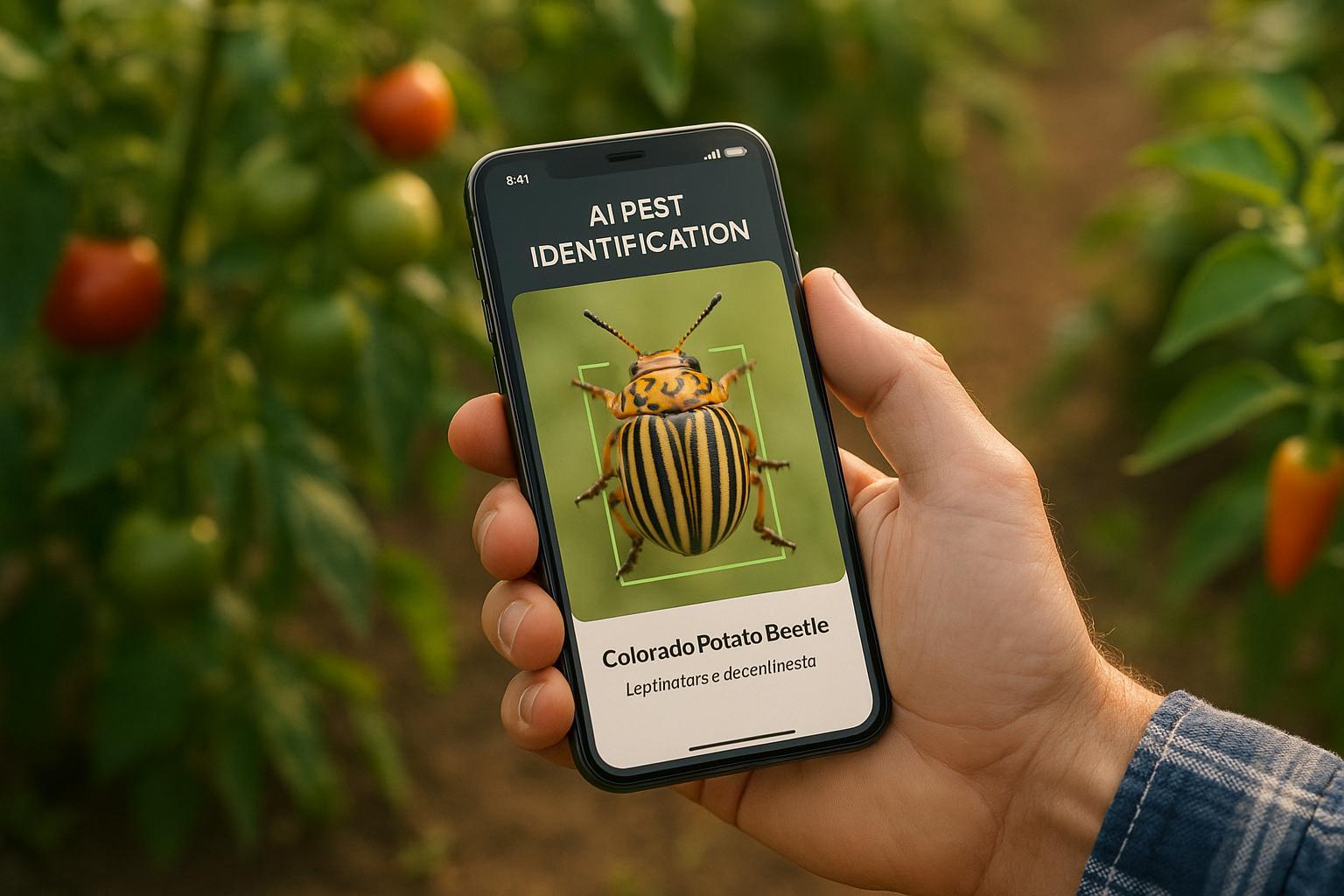
Ultimate Guide to AI Pest Identification Tools
Explore how AI pest identification tools revolutionize pest management for gardeners and farmers, offering efficiency, accuracy, and sustainability.

Effective Strategies for Asiatic Garden Beetle Control
Discover key factors and methods for controlling and preventing Asiatic garden beetle infestations. Learn about identification, preventive measures, and various control options.
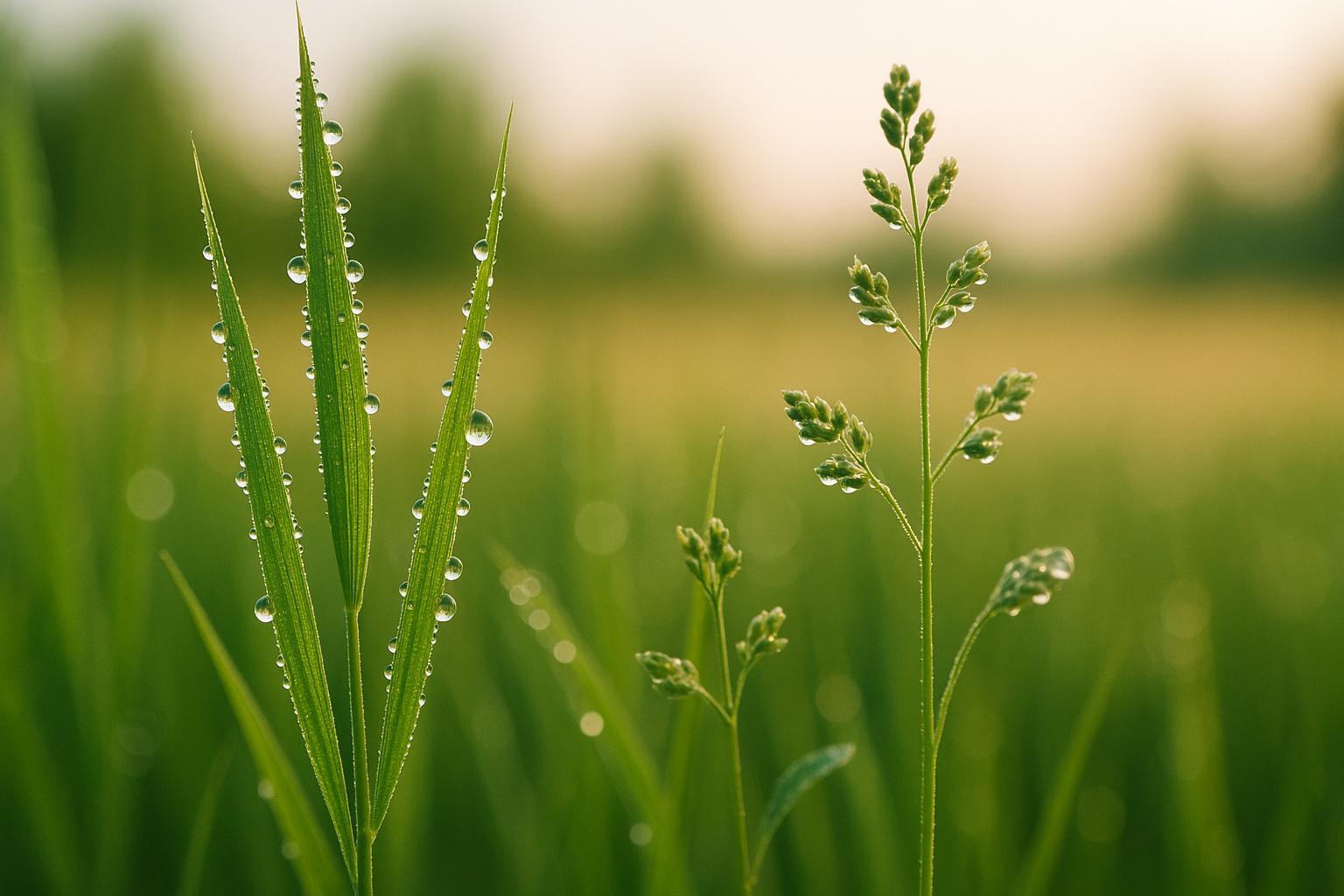
Impact of Droplet Size on Herbicide Efficacy
Understanding droplet size is crucial for optimizing herbicide effectiveness, balancing coverage, drift, and environmental impact.
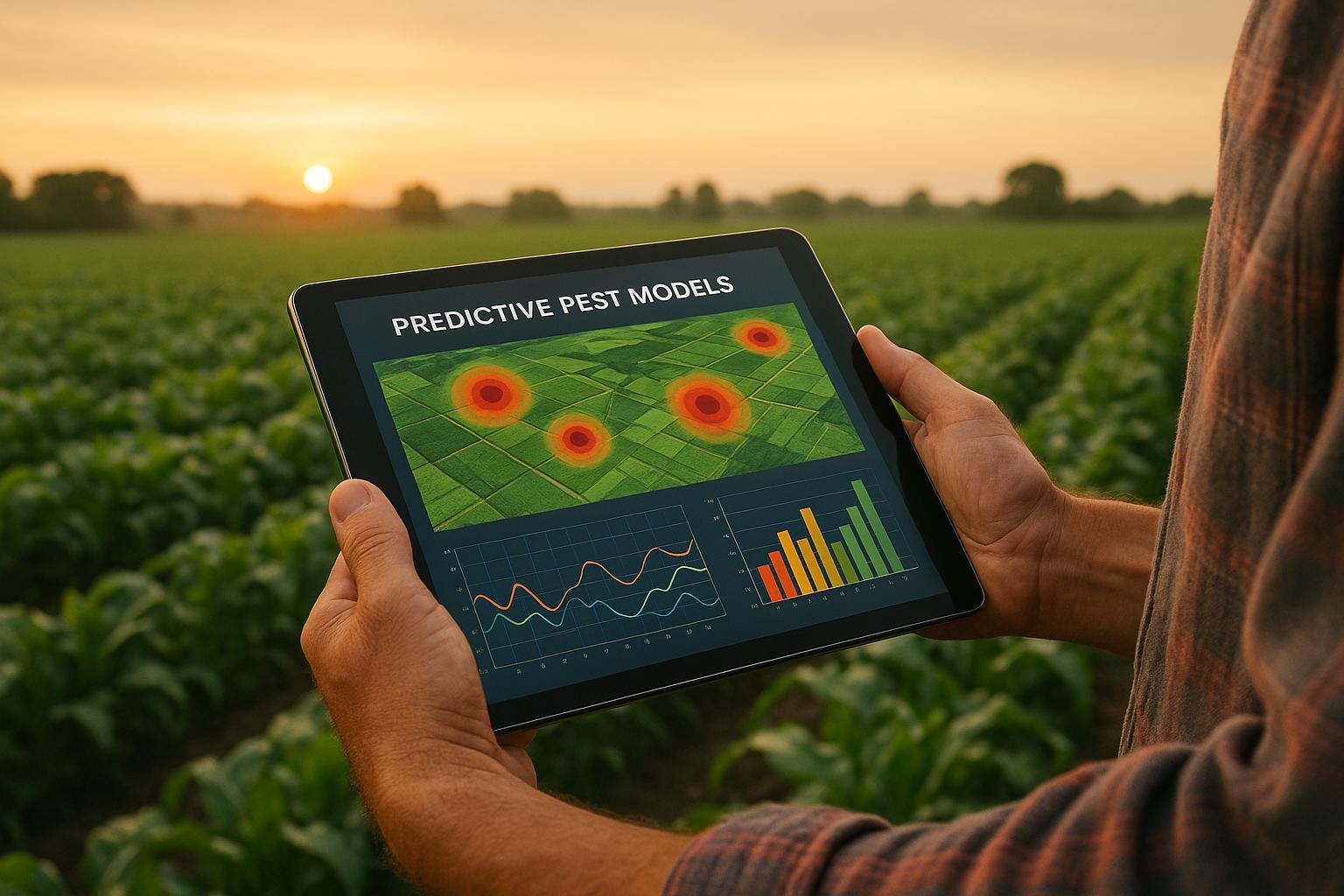
Predictive Pest Models: How They Work
Explore how predictive pest models harness data and AI to forecast infestations, reduce pesticide use, and enhance crop yields sustainably.
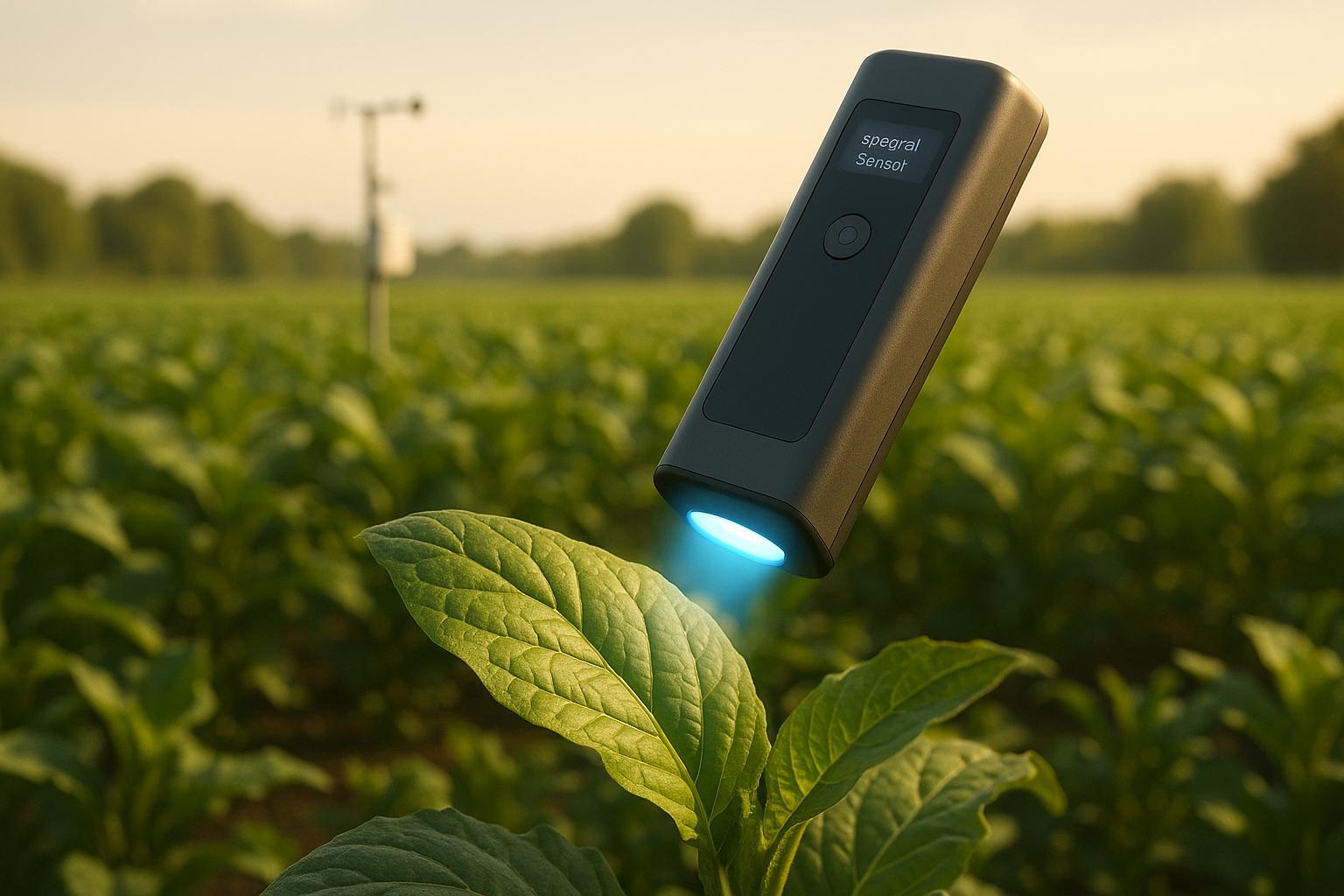
Data Fusion for Plant Disease Detection
Explore how data fusion combines spectral and environmental data to enhance plant disease detection, improving accuracy and early diagnosis.
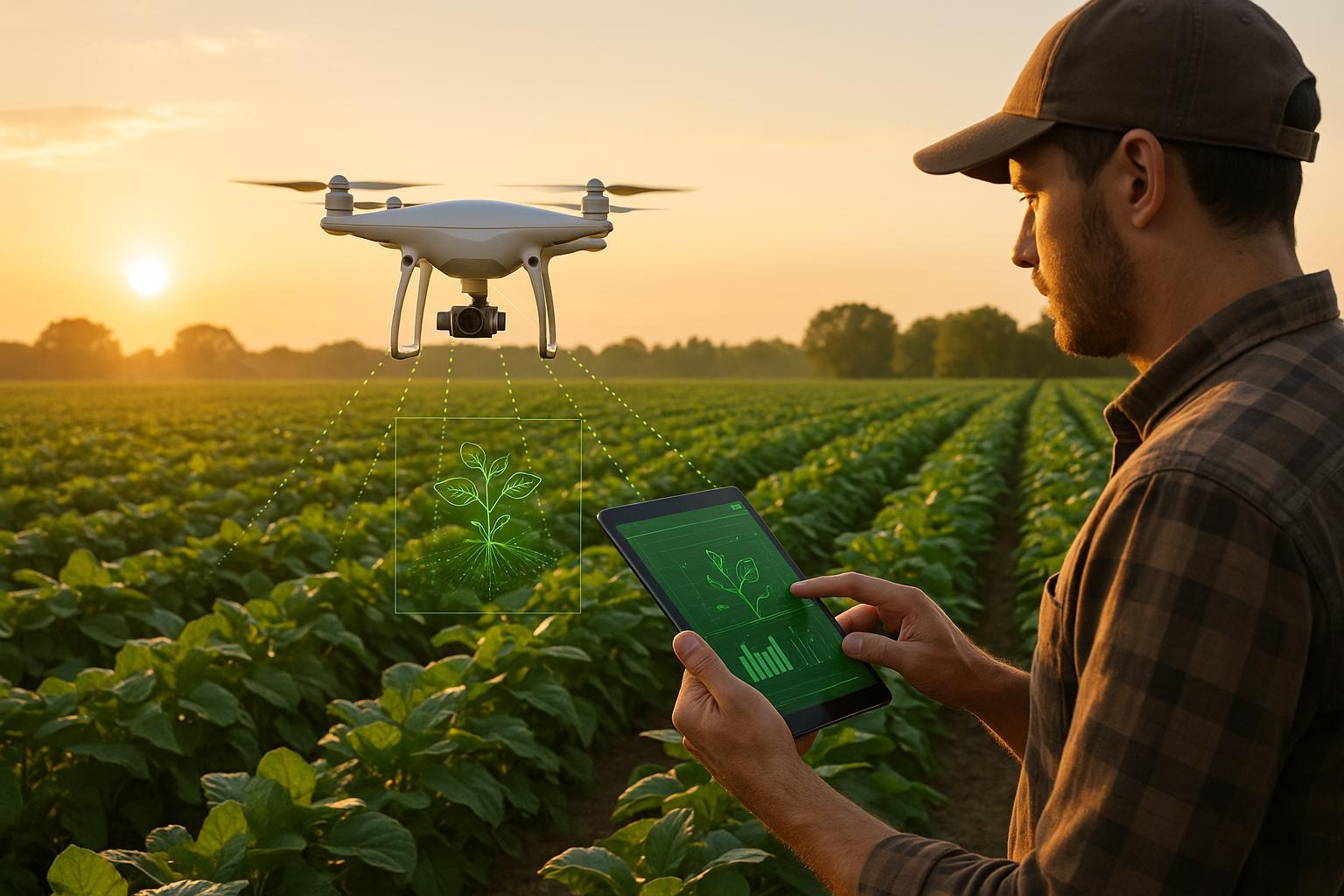
AI in Integrated Pest Management Systems
AI is revolutionizing pest management by enhancing detection, resource efficiency, and sustainability in agriculture, while addressing challenges of traditional methods.